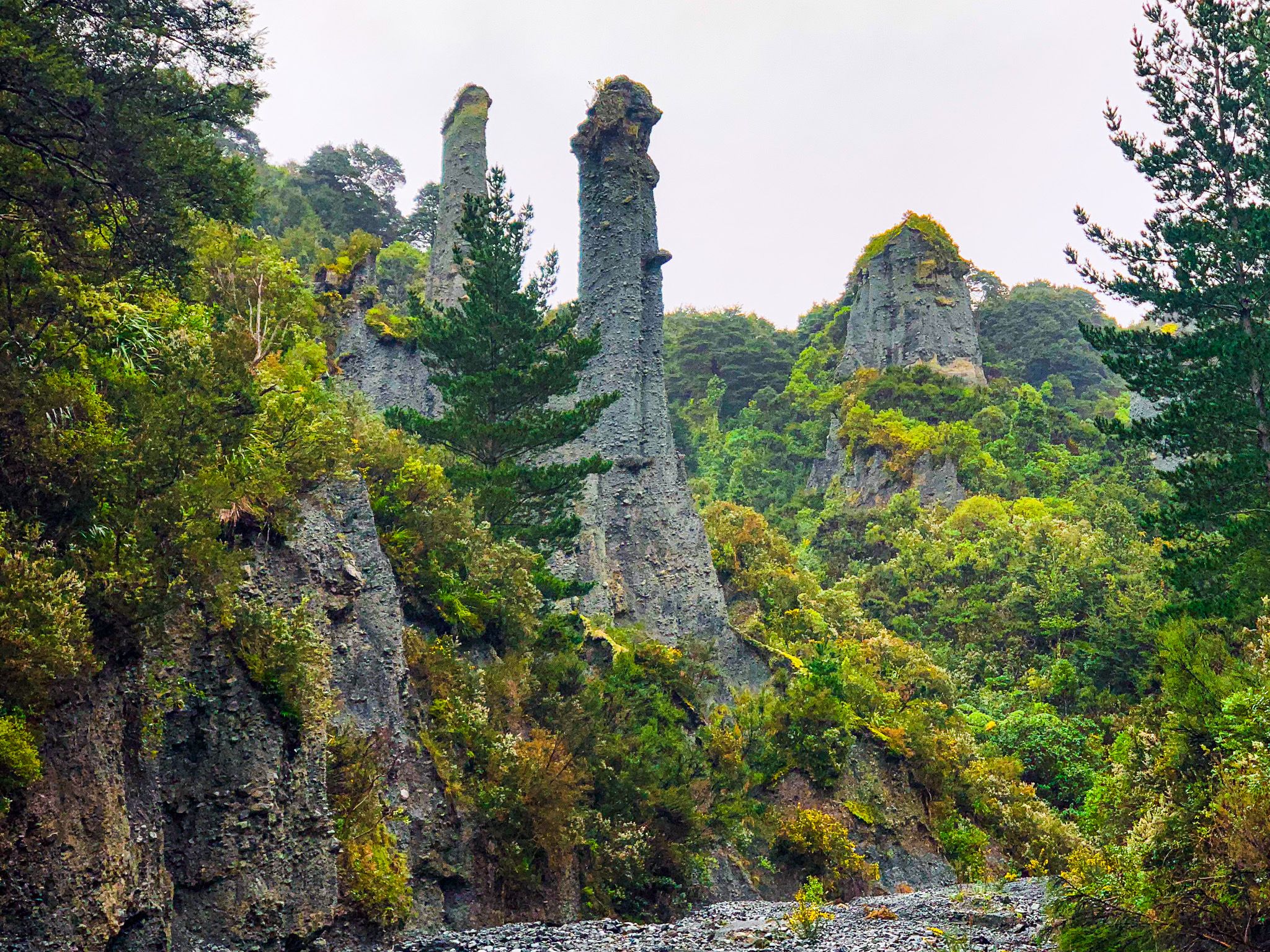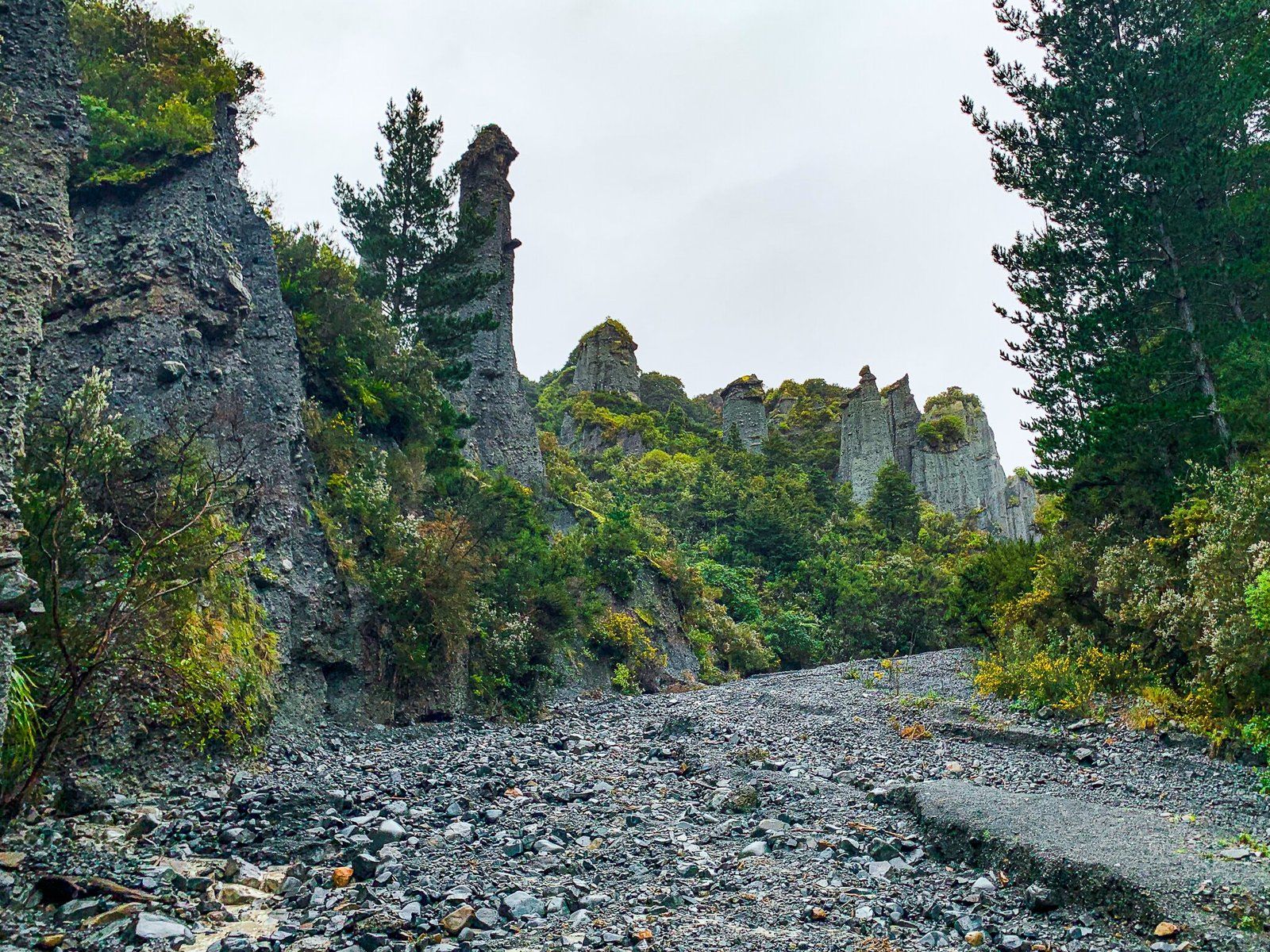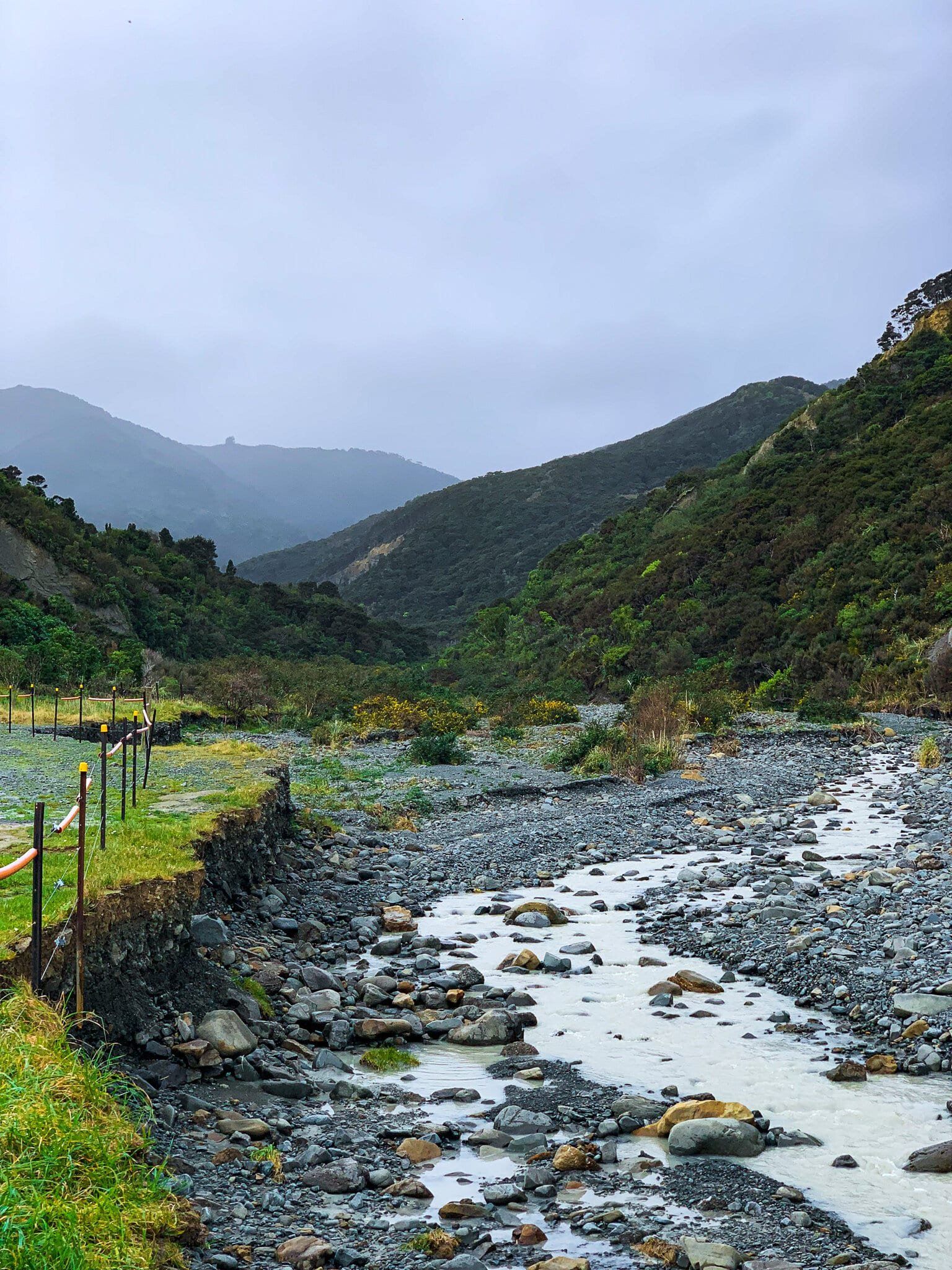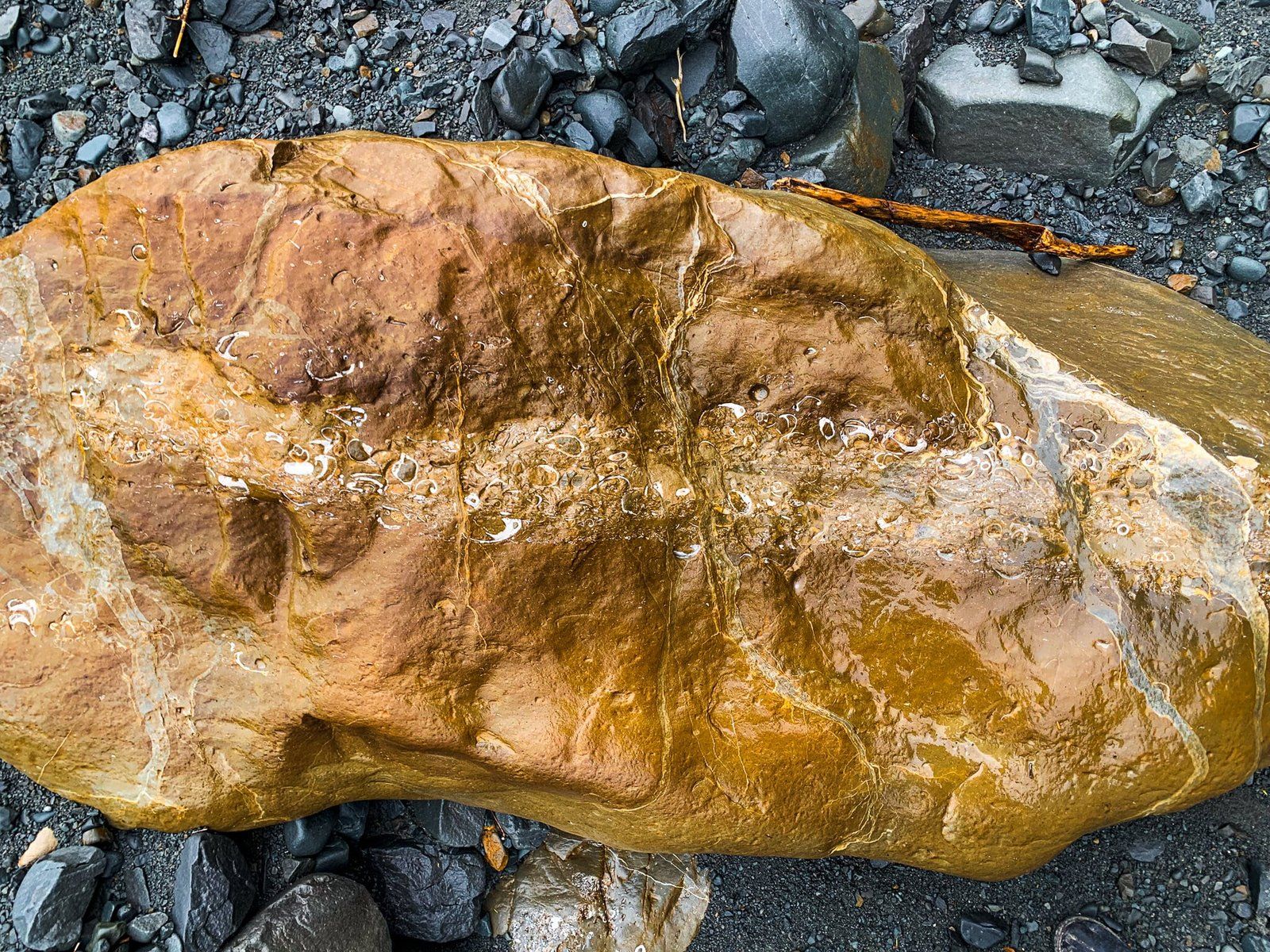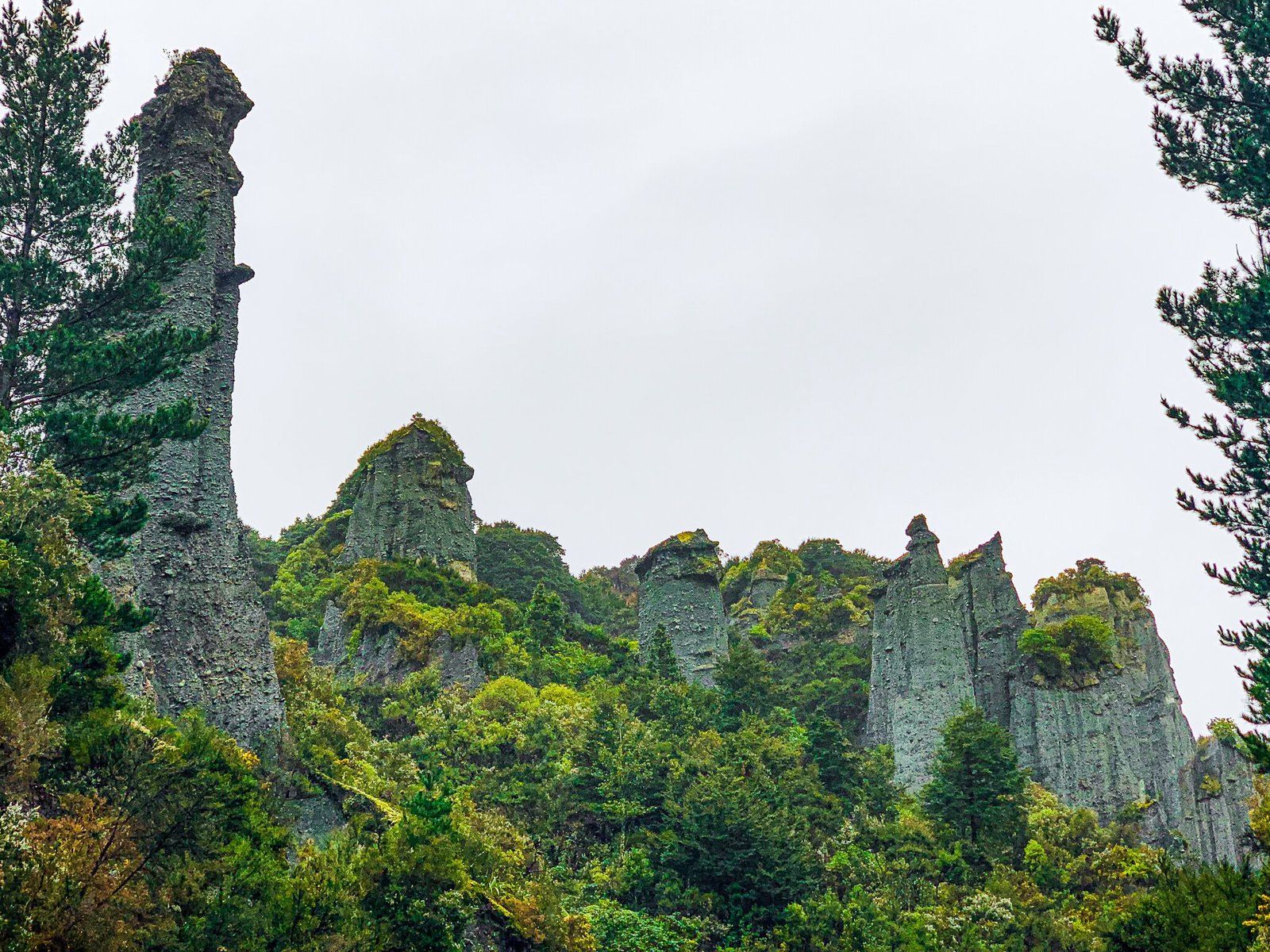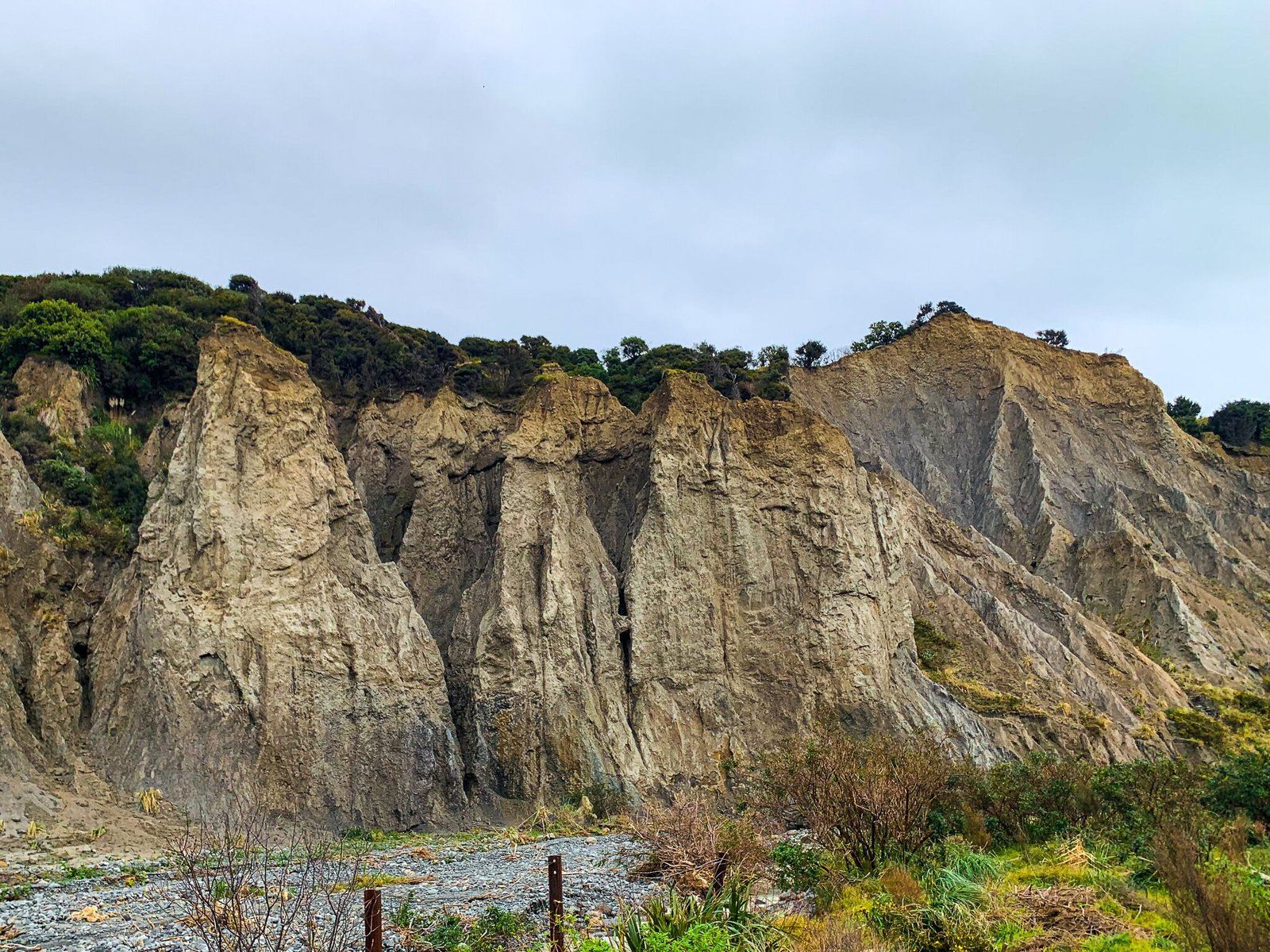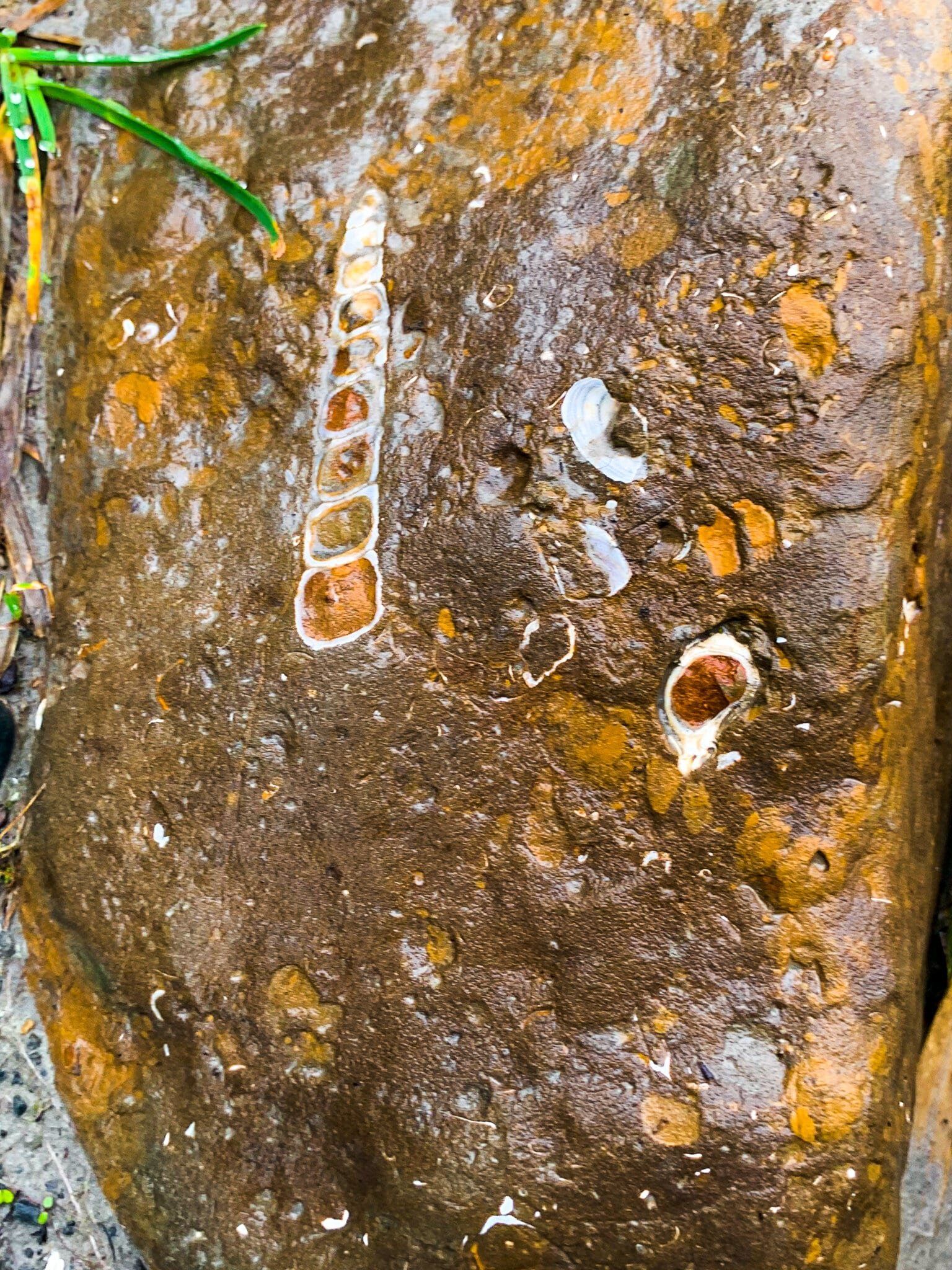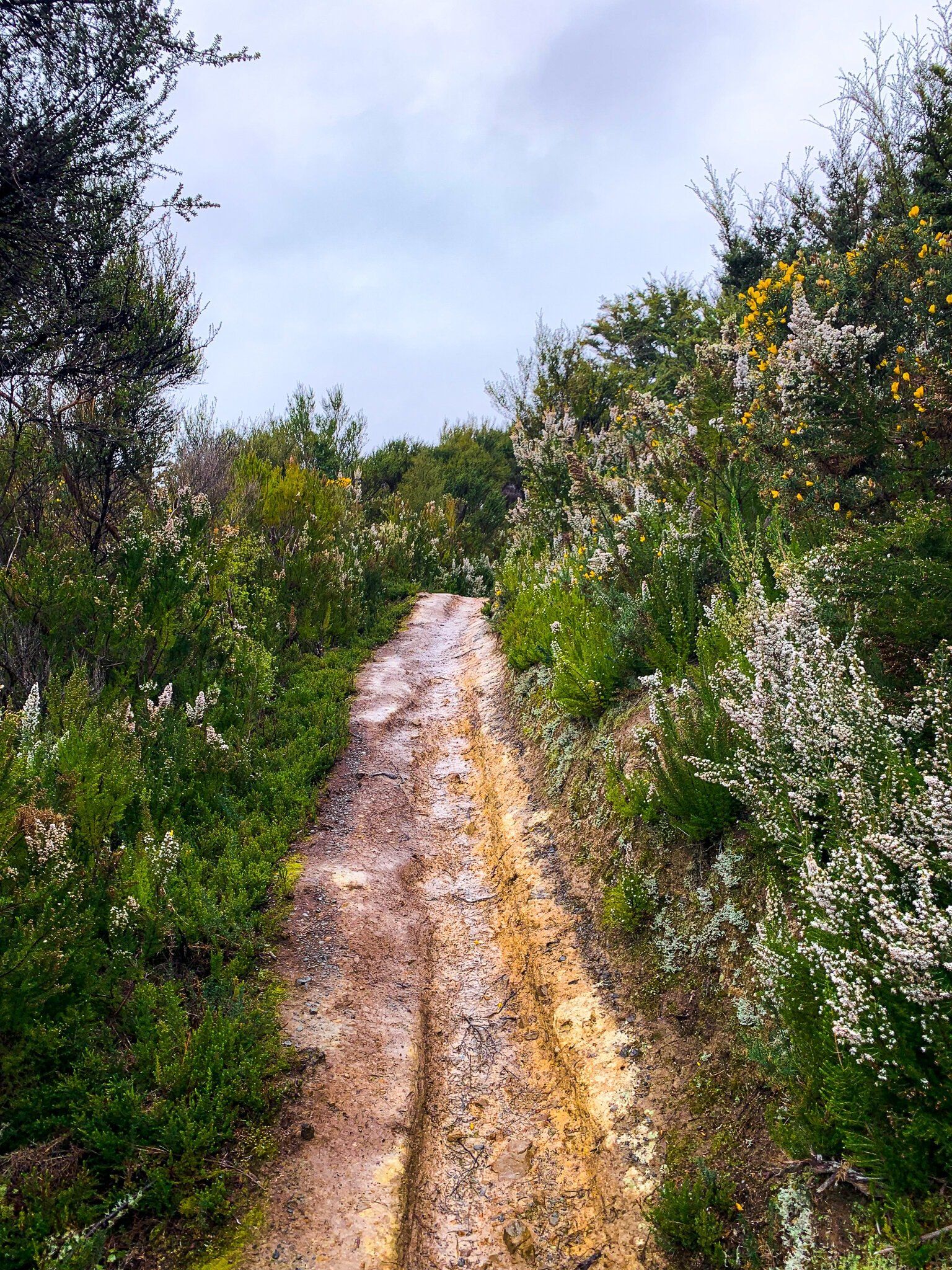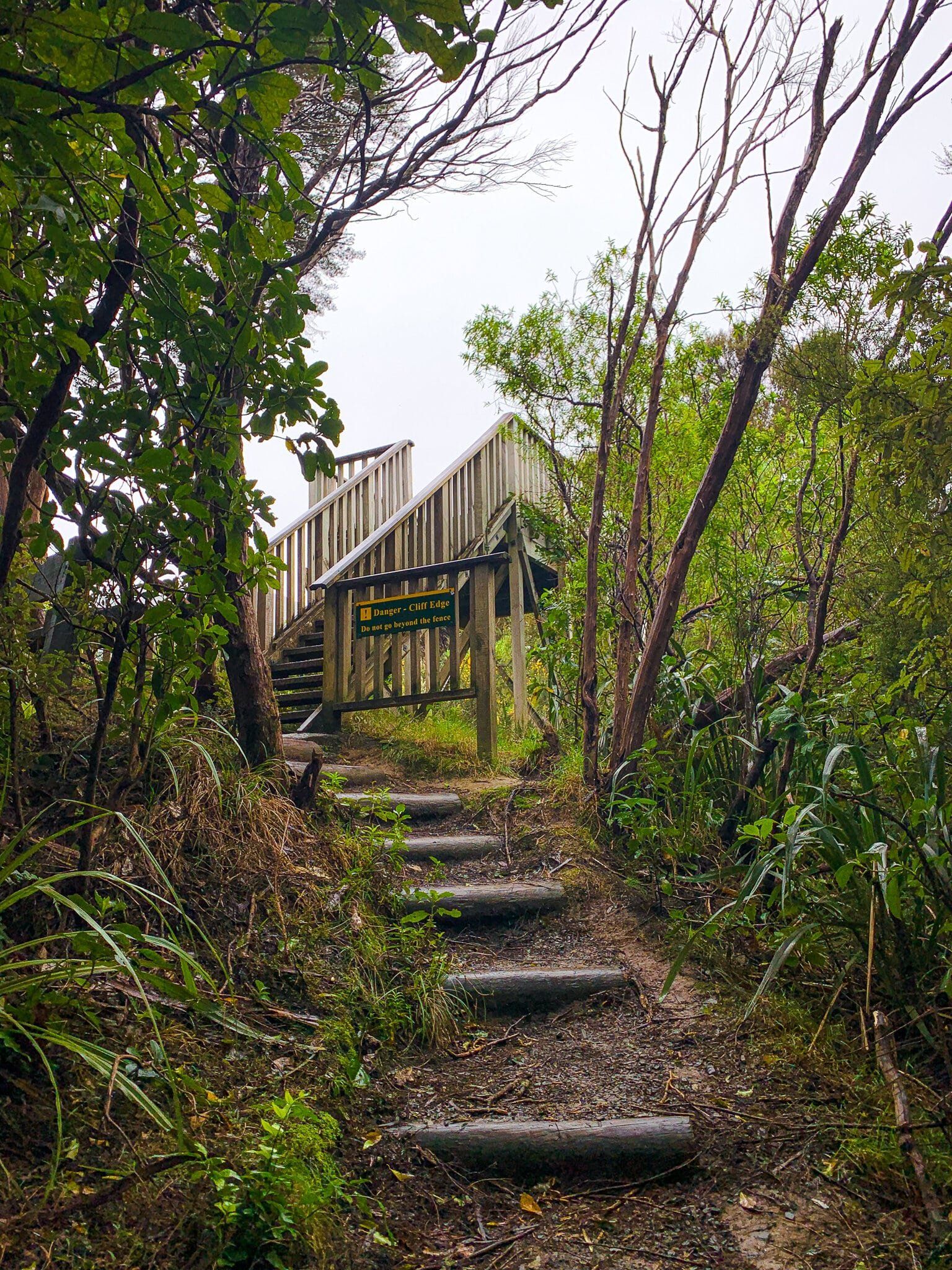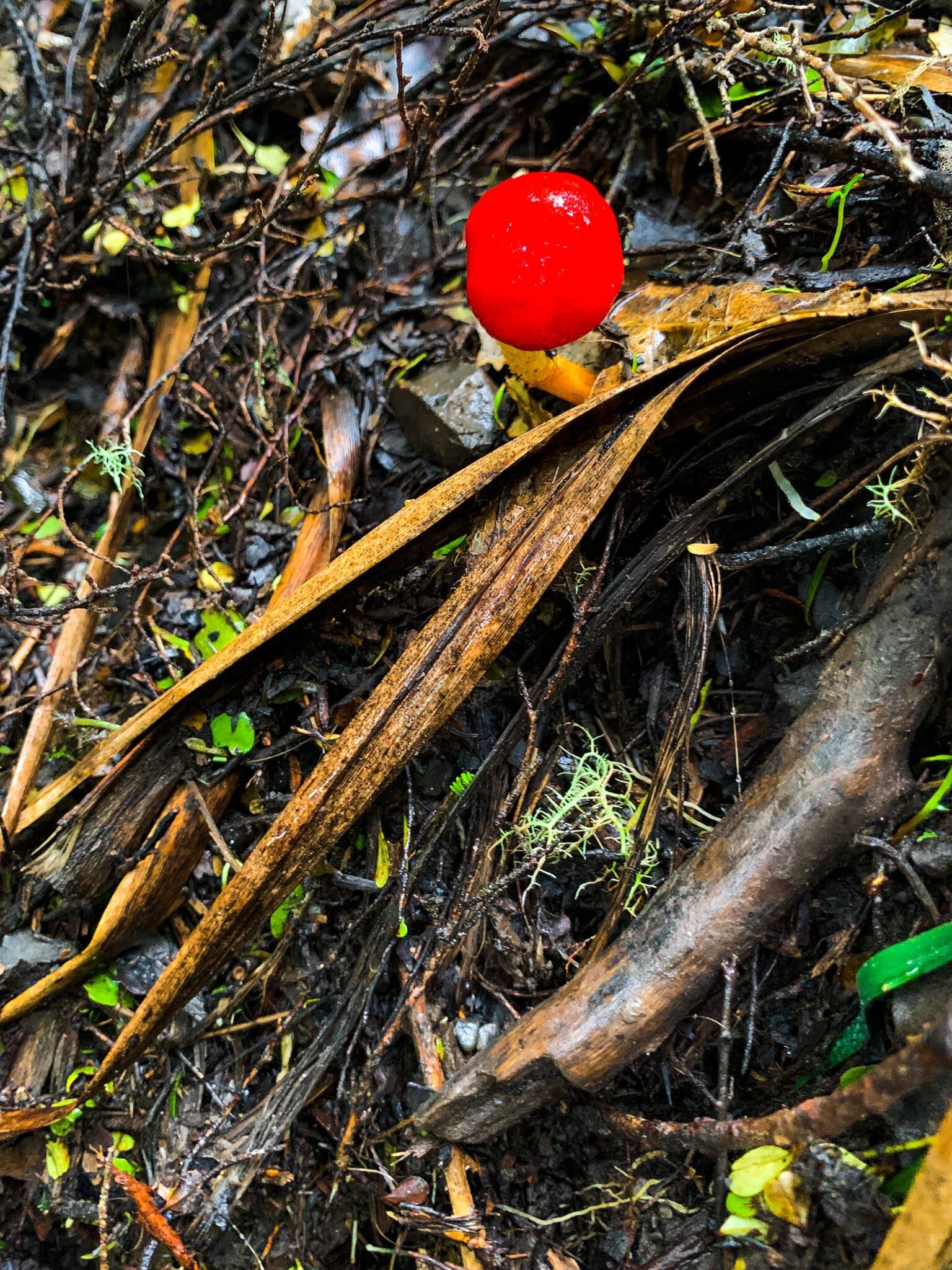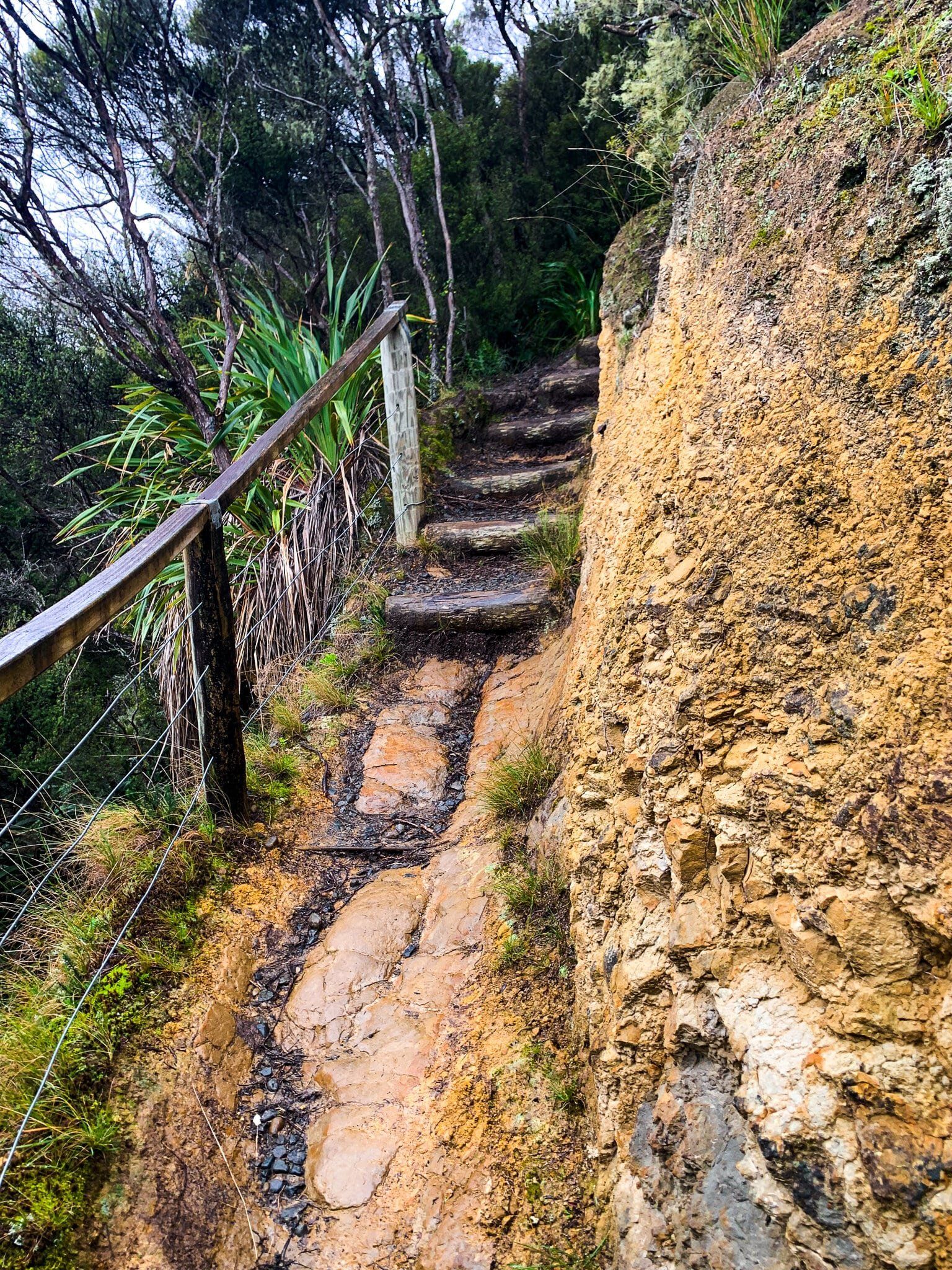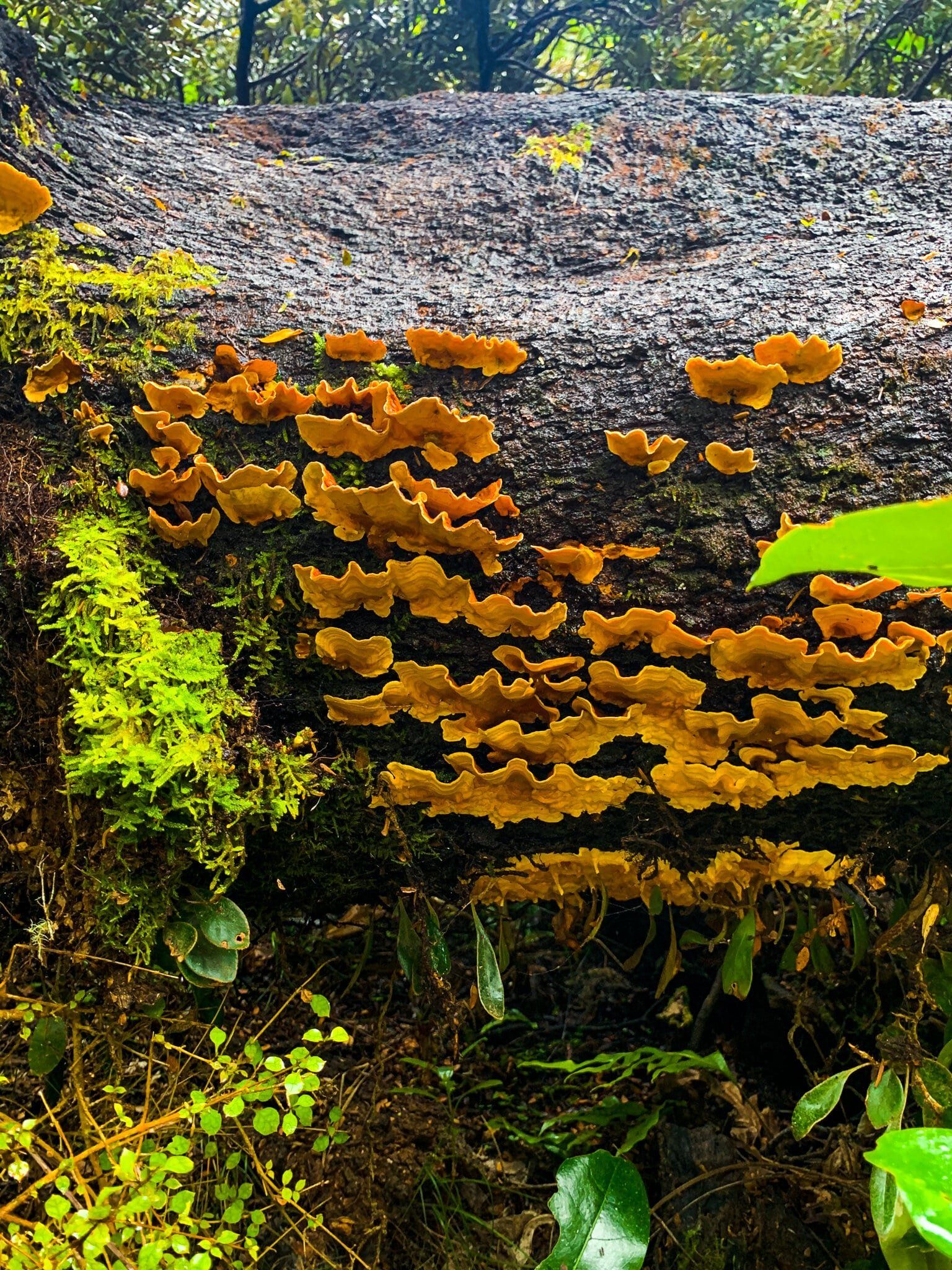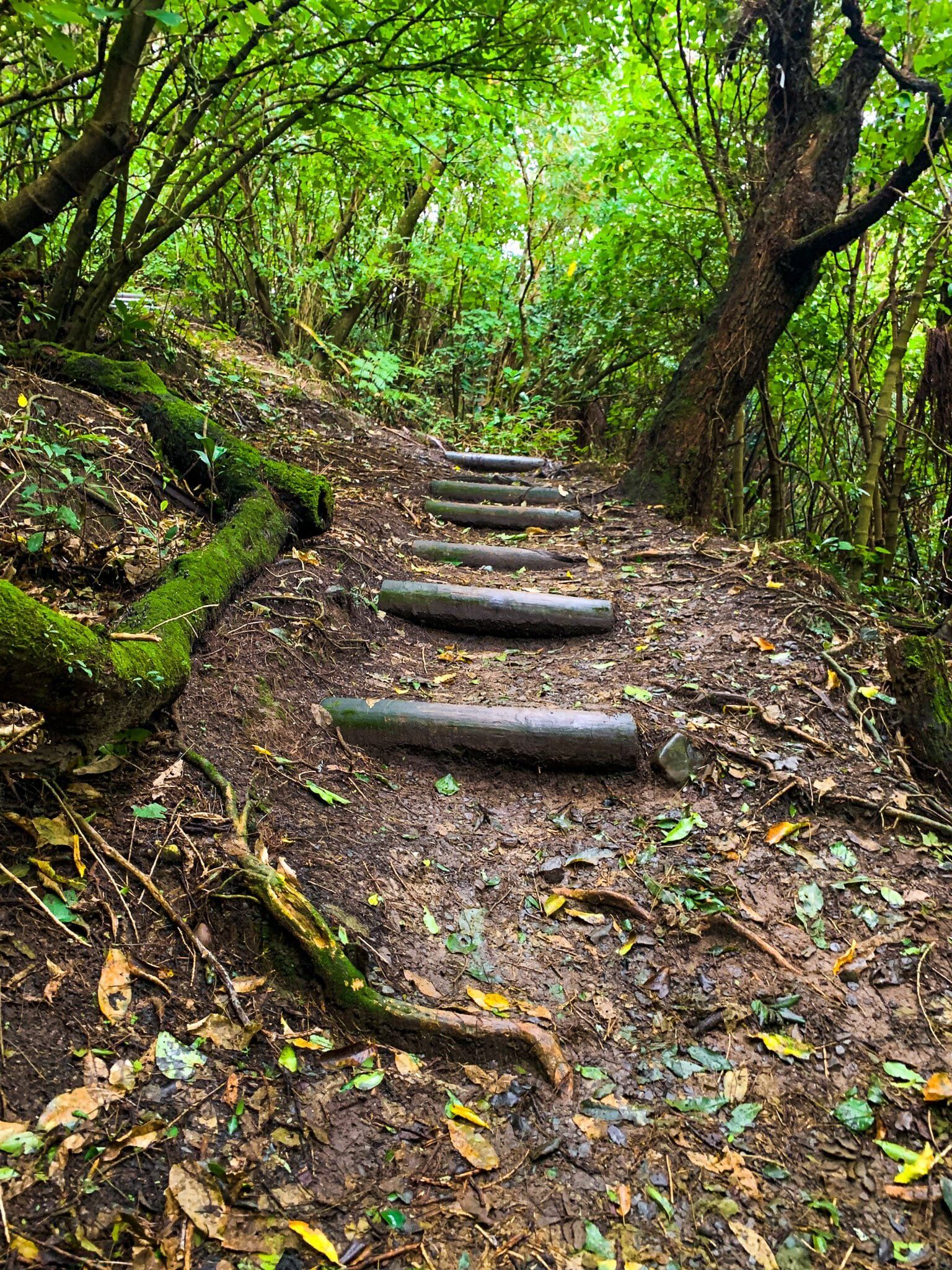If you plan a trip to Cape Palliser, the Putangirua Pinnacles are an excellent stopping point and hike along the way. They must be one of the most spectacular rock formations in the country, and the whole area is fascinating for a geology hobbyist. Drive past the first grassy pullout and park in the gravel area.
Some interesting rock formations are visible from the car park, but if you want truly spectacular views, you will need to do the hike. To find the trailhead, walk to the end of the car park, where a sign indicates the beginning of the walk.
From there, follow the river bed (including finding spots to cross without getting too muddy) for about fifteen minutes before having the option of turning off to the ridge track. This goes to an elevated lookout. Or continue along the river trail to the lookout. The third option is to bypass the lookout completely and walk directly up the river trail to the base of the pinnacles, probably the best bet if you’re short on time.
We took the ridge track to the lookout, following a traditional NZ bush hiking trail through native forest and along the ridge line. If you’re not a fan of heights, we recommend taking the river track instead, as there are a few points along the ridge with steep drop-offs below the path. Eventually, you will reach the lookout point with a wooden platform. From here, you can see directly across the valley to the Pinnacles.
To do the full Putangirua Pinnacles loop, continue down from the ridge track lookout and follow the zig-zag path back to the river. You can then head up the river to see the pinnacles from below (fifteen minutes there) or walk back down the river to the car park for another hour and a bit.
Watch for the many fossilised shells embedded in the river rocks along the way. Also, keep an eye out for the blueish-grey clay, which varies in consistency from firm enough to walk on to soft enough to swallow a shoe whole, with no visible difference. We had to learn that one the hard way! The river track requires multiple crossings, so hiking boots and poles are recommended, though we were able to avoid getting too wet without them.
